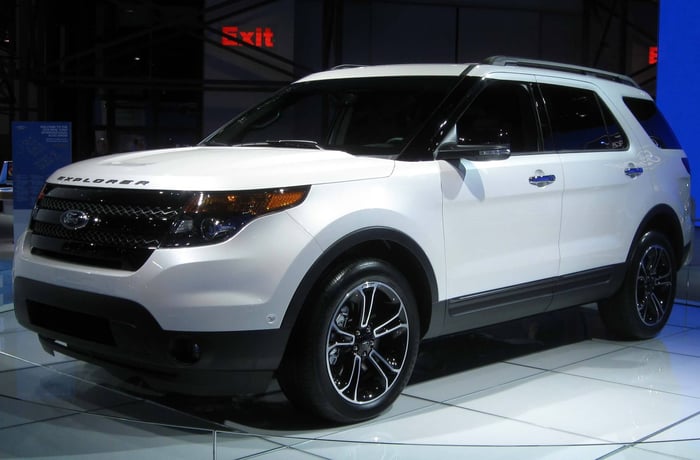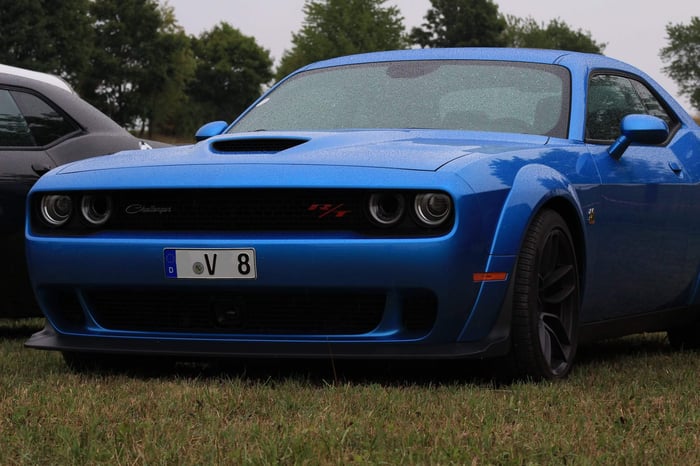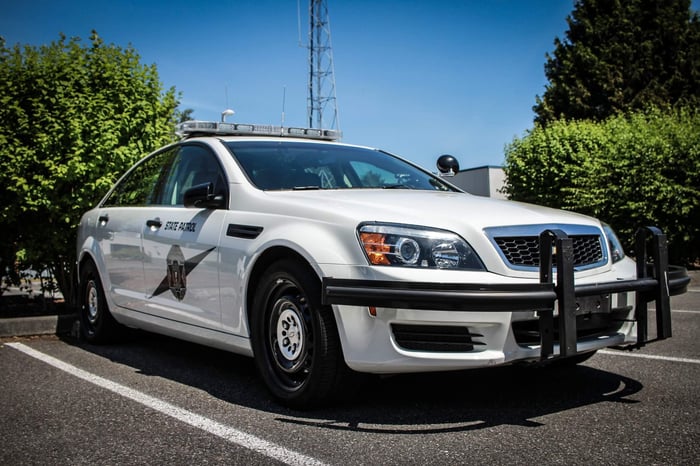Ford Motor Company has been producing the popular Ford Explorer since model year 1991. Despite the vehicle’s popularity, there have been numerous problems with the Ford Explorer through the years. It’s the first four-door SUV Ford produced, and was originally built on the Ford Ranger chassis before getting a new chassis for Generation 3. Ford introduced it to replace the two-door Ford Bronco II and offered four-door and two-door versions of the Explorer from 1991-2003.
Size wise, this SUV is smaller than the Ford Expedition but larger than the Ford Edge. For generation 5, the Explorer was offered as a CUV (crossover sport utility vehicle) and versions of the fifth and sixth generations were also made available to law enforcement agencies. Ford used the Explorer as a base on which to design the Ford Police Interceptor Utility, which succeeded the Ford Crown Victoria (discontinued in 2011).
Besides substantial sales, the Ford Explorer has earned other recognition, such as the 2011 North American Truck of the Year award (for the fifth generation Ford Explorer). Yet, many model year Ford Explorers are plagued with problems, including problems with the engine, transmission, steering, wheels, body paint, and interior accessories. Should Ford Explorers be as popular as they are with such recurring issues through the years?
Based on data from CarComplaints.com, the numbers below (listed on the right) represent the number of complaints logged for each generation of Ford Explorer.
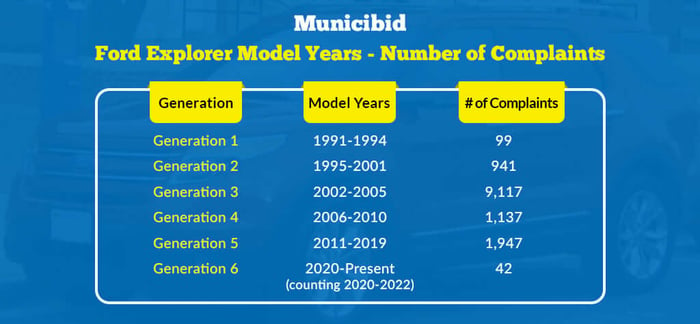
| Generation | Model Years | # of Complaints |
| Generation 1 | 1991-1994 | 99 |
| Generation 2 | 1995-2001 | 941 |
| Generation 2 | 2002-2005 | 9,117 |
| Generation 4 | 2006-2010 | 1,137 |
| Generation 5 | 2011-2019 | 1,947 |
| Generation 6 | 2020-present (counting 2020-2022) | 42 |
Generation 1 (1991-1994)
This short-lived generation (four years) logged less than 100 complaints. The vehicle had popular features carried over from the Ford Bronco combined with components and features working largely as they should. The end result led to increased customer satisfaction and high sales. This Explorer also featured a 155-hp 4.0-liter V-6 engine and a standard five-speed manual transmission (or optional four-speed automatic), along with two available trims—the basic XL and the higher-trim XLT.
The biggest complaints with this generation are the transmission (33 percent), engine (25 percent), and electrical (seven percent). Other complaints included fuel, the cooling system, wheels, and steering.
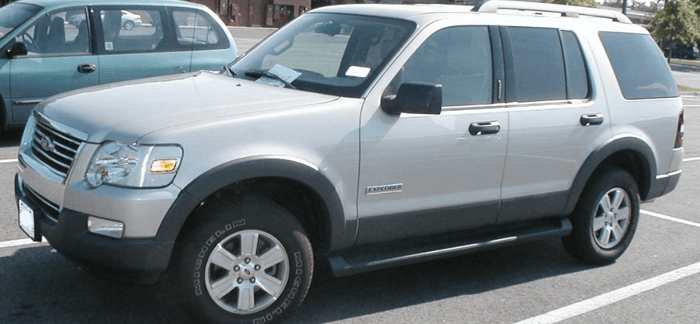
Generation 2 (1995-2001)
The second generation saw only minor changes, such as front bodywork to make it distinct from the Ford Ranger. It carried the same chassis from the previous generation, although the changes that were made were done to the chassis. Ford retired the long-running Twin I-Beam/Twin Tractor Beam front suspension in favor of a short/long-arm wishbone front suspension configuration. Rear-wheel drive remained standard, although four-wheel drive and all-wheel drive were options. Brakes were once again four-wheel ABS, however, brakes on the rear axle changed to disc brakes from drum brakes.
The number of complaints logged against Generation 2 Explorers is nearly ten times the number of complaints logged against the first generation. The top complaints logged against Generation 2 models are the transmission (31 percent), engine (17 percent), and interior accessories (13 percent). Exterior accessories are the next highest complaint, so models with fewer accessories make for less risky options. Also, if you’re considering purchasing one of these model years, ask about the condition of those accessories. Other notable complaints include the suspension, air conditioning, windows, and body paint.
Generation 3 (2002-2005)
The third-generation Explorer featured a ground-up redesign, which ended its commonality with the Ford Ranger, including its chassis. Ford developed the new chassis specifically for the third-generation Explorer (and its Lincoln-Mercury counterparts). Ford redesigned the suspension layout of the rear axle by replacing its leaf-sprung live rear axle with an independent rear axle. Seating was adjusted to allow for nearly 10 cubic feet of additional cargo space.
This is the generation with the most complaints. The number of complaints is nearly tenfold that of Generation 2, which was already nearly tenfold Generation 1. In fact, all four models of this generation take the top four spots of the model years with the most complaints.
Its first-year production model—the 2002 model year—logged 3,965 complaints, which is nearly four times the total number of complaints received by the model up to that point (eleven years). Top complaints for that year include the transmission (38 percent), body paint (19 percent), and interior accessories (nine percent).
For the following year, the company cut the number of complaints by more than half after addressing transmission issues, which decreased in number by 70 percent. Their efforts dropped transmission issues to the second highest number of complaints (25 percent). Body paint issues, which began creeping up near the end of Generation 2, dethroned transmission issues as the top complaint (35 percent) for the first time in the vehicle’s life. Interior accessories remained a top complaint, but was surpassed by wheels (10 percent).
Body paint, transmission, and interior accessories dominated the number of complaints for the following two years with complaints escalating in 2004 before subsiding in 2005.

Generation 4 (2006-2010)
Generation 4 features a new, stronger chassis but still with body on frame construction and a redesigned rear suspension. Ford updated the interior and added optional power-folding third-row seats. Safety features, such as electronic stability control and a tire pressure monitoring system became standard.
This generation Explorer is relatively safe with the exception of the first production year—2006. About 777 (or 68 percent) of the 1,137 complaints logged against this generation are against the 2006 model year. The 2006 model year still suffered from transmission problems (39 percent), but interior accessories and body paint issues were addressed, so the number of those complaints significantly dropped. The cooling system (35 percent) took second spot and engine problems took third (10 percent).
Generation 5 (2011-2019)
This generation is the first Explorer to feature unibody construction based on the D4 platform. It’s also a crossover SUV, which combines the physical features of an SUV with a car. That’s why this vehicle features higher-placed seating and more space than a car, but still isn’t as large as a traditional SUV. Some stylistic changes made the crossover similar to some of its contemporary Ford vehicles, including the new stepped style headlamps and the grille—Ford’s corporate three-bar design with upper and lower perforated mesh work.
Other features available on the fifth generation Explorer included intelligent access with push button start, remote engine start, power liftgate, power adjustable pedals with memory, active park assist, rain-sensing wipers, MyFord Touch, and Ford SYNC by Microsoft.
In 2011, the number of complaints started creeping up from 44 in 2010 to 206 in 2011, maxing out at 511 in 2013 and staying elevated until 2016 (443 complaints). This is also the model year whose water pump would fail, causing the engine to shut off.
These repeat failures led to three class-action lawsuits—two in the US and one in Canada. The judge presiding over the first lawsuit—launched in 2019—threw the case out. However, the judge presiding over the class-action lawsuit in Canada certified that case in 2022. The vehicles list in that lawsuit included Ford Explorer model years 2011-2019, as well as other Ford vehicles. All the vehicles listed in the lawsuit came equipped with a Duratec V6 engine. Back in the US, Ford Explorer owners launched a second class-action lawsuit against Ford over the water pump issue, which is ongoing.
Model years 2018 and 2019 show 26 and 10 complaints respectively, so these are good model years to choose. For the 2011-2017 model years, the vehicle was plagued with more body paint (22 percent) and interior accessories (13 percent) issues. However, transmission problems were minimized (to four percent). Instead, engine (nine percent), exhaust (eight percent), and steering (eight percent) became the following dominant sources of complaints.
In June 2019, Ford recalled 1.2 million Explorers worldwide due to suspension issues. The affected vehicles included model years 2011 to 2017. The company stated when these Explorers were frequently driven over rough terrain that the toe link on the rear suspension could fracture, negatively affecting steering.

Generation 6 (2020-present)
The latest generation Ford Explorer is built on Ford’s new rear-wheel-drive based CD6 platform and features a 10-speed automatic transmission, either rear- or all-wheel drive, and a standard turbocharged 2.3 L EcoBoost inline-four (300 hp) engine. A hybrid Explorer with a detuned 3.3 L V6 (318 hp) engine and 1.5 kWh lithium-ion battery is also available in the US.
People have logged only 42 complaints against the latest generation of Ford Explorers. For the most part, no category truly stands out, all the usual culprits are there: transmission, body paint, internal accessories, engine, and electrical.
The 2023 model year Ford Explorer is essentially a carry over from the previous year. Since there’s no change to engine output, traction, or weight, expect performance values to be comparable to the 2022 model, including EPA ratings of 27 mpg (miles per gallon) city and 29 mpg highway.
However, toward the end of 2023, Ford issued a recall of 230k of its vehicles because of an issue with a faulty rear axle bolt. There's a chance the vehicle could not just lose power, but roll away.
On the plus side, the Explorer's cabin is functional and comfortable. It features a standard 8.0-inch touchscreen infotainment that includes Apple CarPlay and Android Auto capability, as well as a Wi-Fi hotspot and rear-seat entertainment system. The vehicle also has a host of safety features including: standard forward-collision warning and automated emergency braking, standard blind-spot monitoring and rear-cross-traffic alert, along with standard lane-departure warning and lane-keeping assist.
On the downside, the 2023 model year Ford Explorer has some handling issues and the ride can be stiff, especially when equipped with larger wheels. Plus, its interior design lacks imagination. The third-row seats are thinly padded and stiff, and the transmission on the hybrid version can be clumsy at times.
If you’re interested in getting your own Ford Explorer, a different type of SUV, or some other automotive, then have a look at Munciibid’s extensive catalog! We offer useful and affordable vehicles and other government surpljus to people like you nation-wide.
